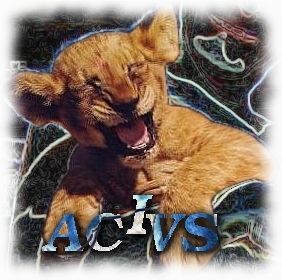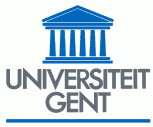|
Acivs 2015 Advanced Concepts for Intelligent Vision Systems |
|

|

|
|
Oct. 26-29, 2015 Museo Diocesano, Catania, Italy |
|

|
Acivs 2015 Invited Speakers' Biographies
Prof. Raimondo Schettini
University of Milano Bicocca
Raimondo Schettini is a full professor at the University of Milano-Bicocca (Italy). He is Vice-Director of the Department of Informatics, Systems and Communication, and head of Imaging and Vision Lab (www.ivl.disco.unimib.it). He has been associated with Italian National Research Council (CNR) since 1987 where he has leaded the Color Imaging lab from 1990 to 2002. He has been team leader in several research projects and published more than 300 papers and several patents about color imaging, image processing, analysis and classification, image and video indexing and retrieval. Raimondo is a fellow of the International Association of Pattern Recognition (IAPR) for his contributions to pattern recognition research and color image analysis.
Presentation: Image features for illuminant estimation and correction
Many computer vision applications for both still images and videos can make use of Illuminant estimation and correction algorithms as a pre-processing step to make sure that the recorded color of the objects in the scene does not change under different illumination conditions. It can be shown that illuminant estimation is an ill-posed problem, its solution lacks therefore of uniqueness and stability. To cope with this problem, common solutions usually exploit some heuristic assumptions about the statistical properties of the expected illuminants and/or of the reflectance of the objects in the scene. In this keynote I briefly review state-of-the-art methods and illustrate promising researches aimed to improve single and multiple illuminants estimation by using features automatically extracted from the image.
Gabriela Csurka
Xerox Research Centre Europe
Gabriela Csurka is a senior scientist at Xerox Research Centre Europe. She obtained her Ph.D. degree (1996) in Computer Science from the UNSA (France) prepared, under the direction of Olivier Faugeras, on projective representation of the three-dimensional environment from uncalibrated stereo views. Before joining XRCE in 2002, she in addition to projective reconstruction from stereo vision she was involved also in research on watermarking digital images and videos for copyright protection. Her current research interest concerns the exploration of new technologies for computer vision applications, including (mono and cross-modal) categorization, retrieval, segmentation, domain adaptation and transfer learning.
Presentation: Domain Adaptation for Visual Applications
Machine learning applications rely in general on a large amount of hand labelled examples. However labelling is expensive and time consuming due to the significant amount of human efforts involved. Domain adaptation addresses the problem of leveraging labelled data in one or more related domains, often referred as source domains, when learning a classifier for unseen data in a target domain. Adaptation across domains is a challenging task for many real applications including NLP tasks, spam filtering, speech recognition and various visual applications. In this talk after a brief overview of different types of domain adaptation methods, I will focus mainly on a several visual scenarios and give a more detailed view of a few recent methods.
Michael Tchagaspanian
CEA
He received the Master of Science degree in electrical engineering from INP-Grenoble University (France), in 1994. He worked as Design Engineer for 13 years at ST Microelectronics and Onsemiconductors. He has designed system on chip integrated circuit for Radio Frequency and Power management applications. He has led important project for automotive and mobile phone application, and has contributed to successful business. Since 2005, at cea-Leti, he has been the head of image sensor design team, dedicated to smart integrated circuit for imaging and display applications. Advanced algorithms are designed and integrated in circuit architecture for image processing at pixel level. New architectures for read-out integrated circuits are designed for defence & security (infrared), medical (X & gamma Rays), home automation and consumer market (infrared & visible wavelength). He is the author or co-author of 20 papers and 8 patents in the field of image sensors. Nowadays, as business development manager, he develops collaboration between CEA and industrial partners in field of smart sensing, imaging and embedded vision.
Presentation: Smart Image Sensor for Advanced Use and New Applications
Multimedia applications such as video compression, image processing, face recognition, run now on embedded platforms. The huge computing power needed is provided by the evolution of the transistor density and by using specialized accelerators. These accelerators are supported by multimedia instructions set. Using these complex instructions can be a nightmare for the engineer because there are many ways to program it, quality of the compiler support can be random depending on the couple compiler/platform and worse, performances can be data dependent. Using libraries can be an option if such libraries exist and provide enough performances. In this talk, I’ll illustrate the difficulty to generate binary code for this application domain by practical example of code generation. Then I’ll show a tool deGoal which is developed in house to resolve these problems.
Alessandro Capra
STMicroelectronics
Alessandro Capra received his Master Degree in Electronic Engineering, specialization in Computing from the University of Palermo in 1998. Since 1999 he has been working in STMicroelectronics, Advanced System Technology (AST) group, Computer Vision Research Roadmap. Main activities are related to research innovative architectures and algorithms for video analytics applications. He is the Computer Vision Catania Lab Manager of a team developing next generation Computer Vision algorithms and systems. He is author of many patents and papers in these R&D fields, ICIP and EI reviewer.
Presentation: Computer Vision Applications and Their Industrial Exploitation
During the talk the main business opportunities in the field of the computer vision for the semiconductor industry will be outlined. Market analysis, R&D trends, time to market, customer requirements, algorithm complexity and architectural implementations are the key aspects to be analysed for a product development. A few potential R&D activities like people detection and feature extraction will be presented and their evolution towards a product will be outlined. A short overview on R&D evolution will be outlined.




